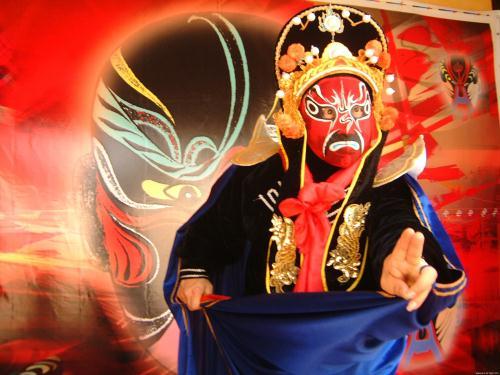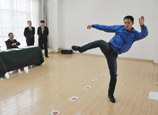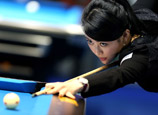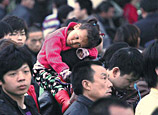
 |
| Face-changing (Source: www.sc.gov.cn) |
>>>Teeth playing, a 400-year-old cultural heritage in S China
Face-changing is a kind of characterization trick used in Sichuan Opera,and a romantic technique to reveal inner emotions and thoughts of characters in the play.
It is said that face-changing originated from the ancient people who drew different shapes on their faces to scare the invading beasts for survival. Sichuan Opera performs face-changing on the stage and makes it a unique art with marvellous skills.
The techniques adopted in face-changing roughly fall into three categories: smearing, blowing and peeling.
Smearing is to smear the colored paints on certain part of face and during performance the actor would smear the paint to turn his face to another color. The paints can be smeared either on the actor’s forehead and eyebrows to change the entire face or on his cheeks and nose to change the lower half of the face. The paints can be smeared only on a specific part to change that part. Many characters such as Xu Xian in Madame White Snake, Pei Yu in Releasing Pei, Ghost Chen Lun in Fei Yun Sword are performed by smearing.
Blowing can only apply to powders, like gold, black and silver powders, etc. A small bowel is placed on the stage with powder in it and during performance the actor would dance to throw his face close to the bowel and blow the powder, which will adhere to the actor’s oiled face quickly and change it to another color. The actor must pay attention to close his eyes, mouth and hold his breath when blowing. Zi Du in Capturing Zi Du and Yue Yangzi in Zhi Zhong Shan are performed by blowing.
Peeling is a relatively complicated way to change face, which requires to draw the facial mask on a piece of silk beforehand, cut it and tie a handful of silk thread to each mask before pasting them to the actor’s face. The silk thread is tied to the actor’s costume like his belt, which is easy to operate but not eye-catching. During the performance, the mask will be peeled one by one under the cover of dancing. For example, bowel boy in Madame White Snake can change face into green, red, white and black and so on for seven or eight times on end. Moreover, the thief in Jiu Zheng Building and Niu Long in Wang Niang Beach are also performed by peeling. Peeling is somewhat difficult. For one thing, the adhesive can not be used too much in case the mask can not be peeled or all the masks are peeled in one stroke; for another, the actor’s movement must be neat and fast and conduct a skillful performance to deceive the eyes of the audience.
In another method, the actor practices breathing to change his face. It is said that Peng Sihong, a deceased famous actor of Sichuan Opera adopted this technique when performing Zhuge Liang in Wisdom in an Empty City. When the child reported the troops of Si Mayi had retreated, Peng could practice his breathing to change his face from red to white and then to green to display Zhuge Liang’s fear after his relief.
In all, face-changing is a very unique feat of Sichuan Opera, which has been adopted in many other Chinese operas and even spread abroad. (Source:www.sc.gov.cn)
















 Villagers express condolence to death of retired CPC chief of Huaxi Village
Villagers express condolence to death of retired CPC chief of Huaxi Village


![]()
